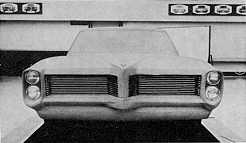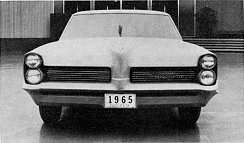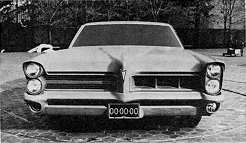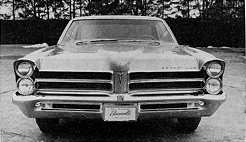 All GM cars are designed by the styling staff, an important factor in the interchangeability of body parts among the five divisions. Styling operates as a central design service for all GM divisions. It's responsible for providing automobile designs suited to the requirements and specifications, and subject to the approval of divisional and corporate management. Separate exterior and interior studios are responsible for each division's products, and separate creative teams are assigned to each one.
All GM cars are designed by the styling staff, an important factor in the interchangeability of body parts among the five divisions. Styling operates as a central design service for all GM divisions. It's responsible for providing automobile designs suited to the requirements and specifications, and subject to the approval of divisional and corporate management. Separate exterior and interior studios are responsible for each division's products, and separate creative teams are assigned to each one.
The studios are always locked. Only members of Pontiac's staff can get into the Pontiac studio, for example. Only Mitchell and a handful of styling executives circulate among all the studios to carry on the necessary direction and coordination.
"This keeps each of our divisional design groups sharp and highly competitive," Mitchell points out. "The result is better design all the way around &151; also genuine distinction and personality for each division's cars. The various lines of Pontiacs over the past few years are convincing examples of how well this works."
The design of each year's new Pontiac actually starts long before the two-to-three-year lead time necessary for production models. From one of the research design studios come themes and ideas, worked out by creative teams who can work without the pressure of deadlines and the limitations of cost and production specifications. These studio teams are looking further into the future, to tomorrow's new materials and technology and changing transportation requirements.
The first design steps for the 1965 Pontiacs, after corporate and Pontiac management gave the go-ahead in 1961, took place in an important department called the body development studio. Here, designers made the first agreements on basic architecture of the new car. Interior and exterior dimensions, seating, body geometry, and interchangeability were established, typically, after many seating bucks and models were built and many liaison meetings took place between styling executives, Fisher Body, and Pontiac engineers and stylists.
After approval of the basic requirements of the program, the design work was transferred to the production studios, where the creative teams started to work on individual models. Studios are large rooms, equipped for work on four full-sized models or actual automobiles at a time. The Pontiac styling staff, like others, is small enough to emphasize each individual's creative contribution. It averages about 15 designers, sculptor-modelers, engineers, and technical specialists.
The design process is a continuing cycle of creation and evaluation. For the 1965 Pontiacs, hundreds of ideas developed in the designers' imaginations were first sketched in two dimensions. Some of the better ones were worked out in three dimensions as scale models. The more promising themes were then developed in full size - as line drawings laid out over the specific arrangement- of seating and mechanical components. Then they were evaluated again.
At this point, many wonderful sketches (that included some exciting exaggeration) looked less promising when brought closer to reality. Various media and techniques are used by designers to create these evaluation sketches and models. These range from rough pencil sketches to elaborate fullsized watercolor renderings and from cardboard mockups to precise clay models.
|

These four photos show styling evolution of '65 Bonneville's front end. First proposal repeated theme of 1964 grille.
|

Four months later, headlights blended into grille, split bumper appeared, and prow sculpturing became a bit more rounded.
|

By March, 1963, general lines became firm, but stylists had some doubt about grille and blinkers, so put two on one car.
|

Fiberglass model finally spells out ultimate shape of Bonneville. This handmade car looks every bit like one in metal.
|
|